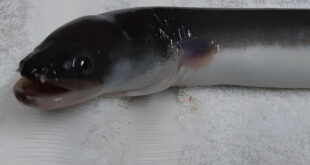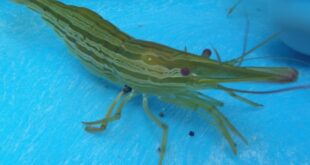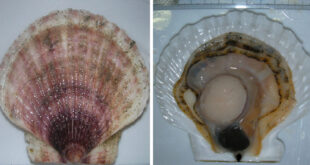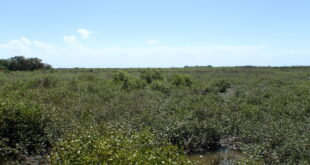By Development Communication Section / EGDJ Ayson
A training course on Nursery and Grow-out Culture of Mangrove Crabs (Mud Crabs) was organized by SEAFDEC/AQD and Winrock International last 25-27 February at the Northern Mindanao School of Fisheries (NMSF) campus in Buenavista, Agusan del Norte, Philippines. There were 35 participants including mangrove crab (mud crab) growers from Agusan, Surigao and Dinagat Island as well as fish growers interested in diversifying their crops, some faculty members of NMSF and technical staff for the fisheries project of Winrock International. Students enrolled in the Fisheries and Aquaculture Program of NMSF also attended the course as observers.

Mangrove crab (mud crab) aquaculture has excellent potential for expansion in the Caraga region where current production is relatively low considering that the region is one of the major sources of crablets for grow-out farms in other parts of the country, especially the Visayas. The overall aim of this project component is to extend mangrove crab (mud crab) production technologies developed at SEAFDEC/AQD to farmers in coastal areas in the region.

The course comprised of lectures and practical sessions on different aspects of mangrove crab (mud crab) production. Lecture topics included an overview of the mangrove crab (mud crab) industry (in the Philippines, the region and the world), biology of mangrove crab (mud crab), hatchery, nursery and grow-out production systems, feeds and feeding management and value-addition (fattening, production of soft-shell crabs). The hands-on sessions included 1) identification of the different mangrove crab (mud crab) species, 2) pond preparation, 3) fabrication/construction and installation of nursery cages and shelters, 4) packing, transport and stocking of crablets; 5) feed preparation and computation of feed ration; 6) monitoring of stocks and water quality paramaters and 7) record keeping. During the training, a demo set-up for primary and secondary nursery was established. The early nursery phase uses fly size mangrove crabs (mud crabs) that will be grown to juveniles (2-2.5 cm CW) in 21-30 days using net cages in ponds, while in the secondary nursery phase, juveniles will be grown to match box size (4-5 cm CW) for 21-30 days using also net cages in ponds. A demo pond for grow-out culture was also stocked with match box size crablets.

After the training, the demo site will be managed by a technician from NMSF with technical support from SEAFDEC/AQD. The demo site will also serve as a field lab for students under NMSF’s aquaculture program. The participants thanked the resource persons for the concepts and skills that they learned from the course. They also expressed hope mangrove crab (mud crab) hatcheries will be established in the region in the near future to address problems with supply of good quality seeds for mangrove crab (mud crab) farming.

 SEAFDEC/AQD Southeast Asian Fisheries Development Center | Aquaculture Department
SEAFDEC/AQD Southeast Asian Fisheries Development Center | Aquaculture Department



